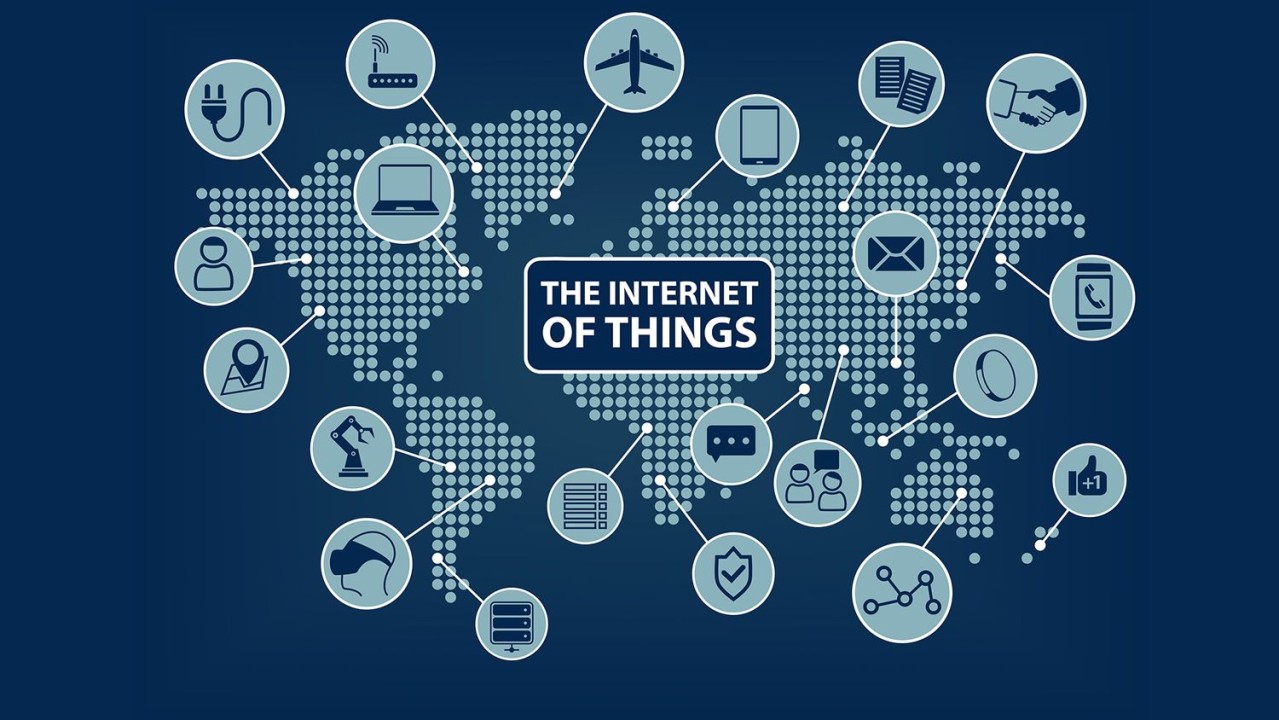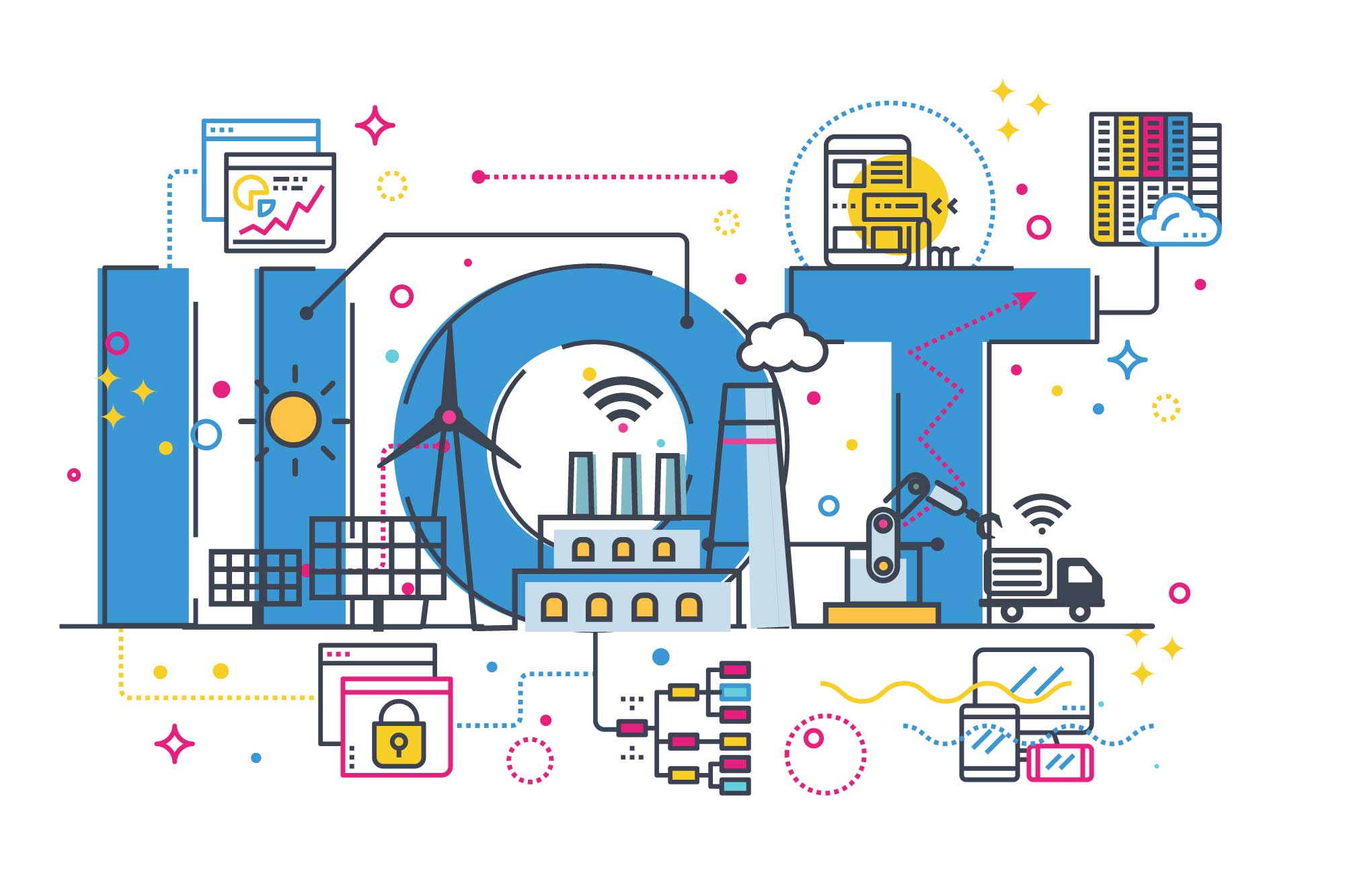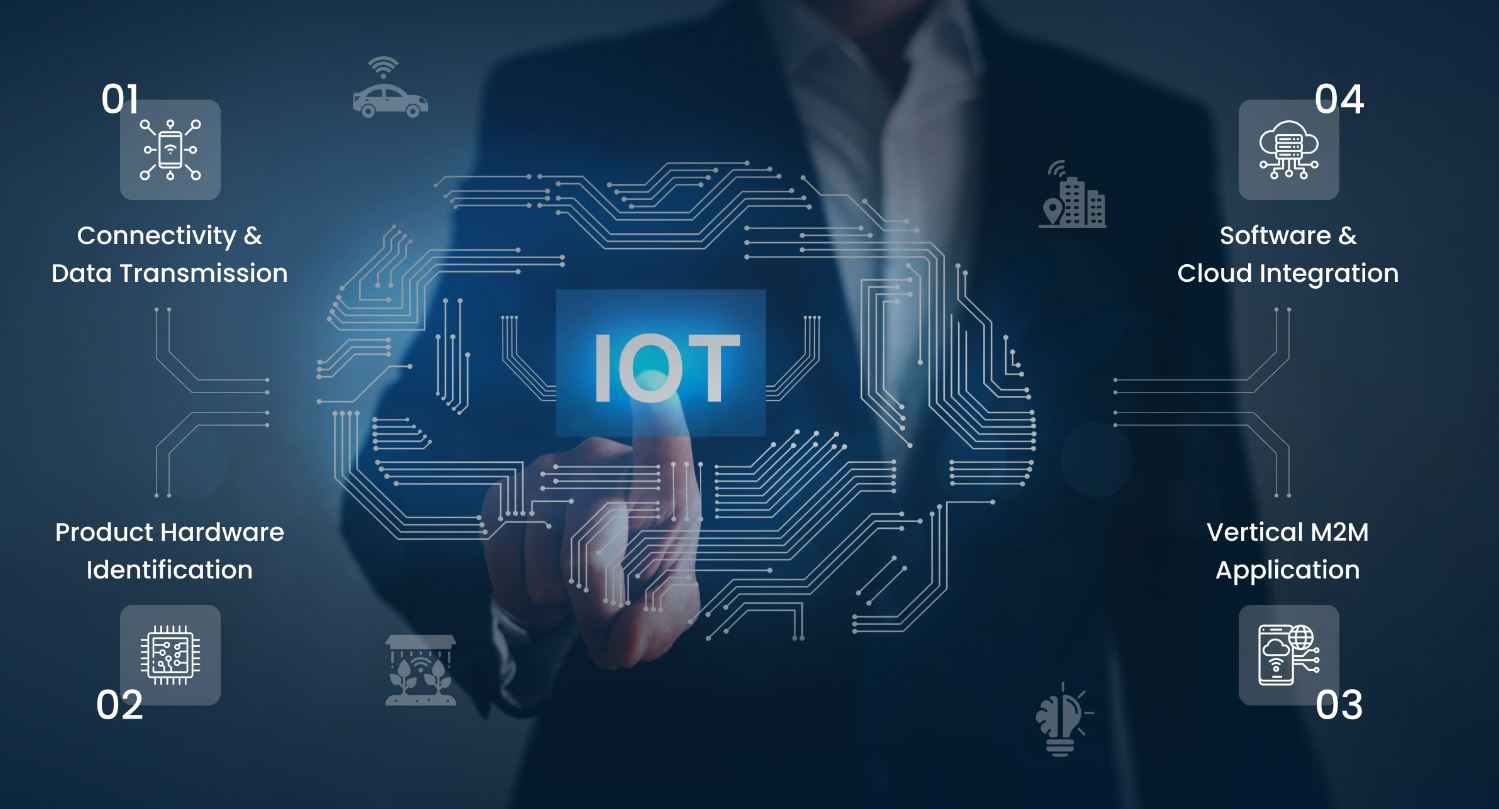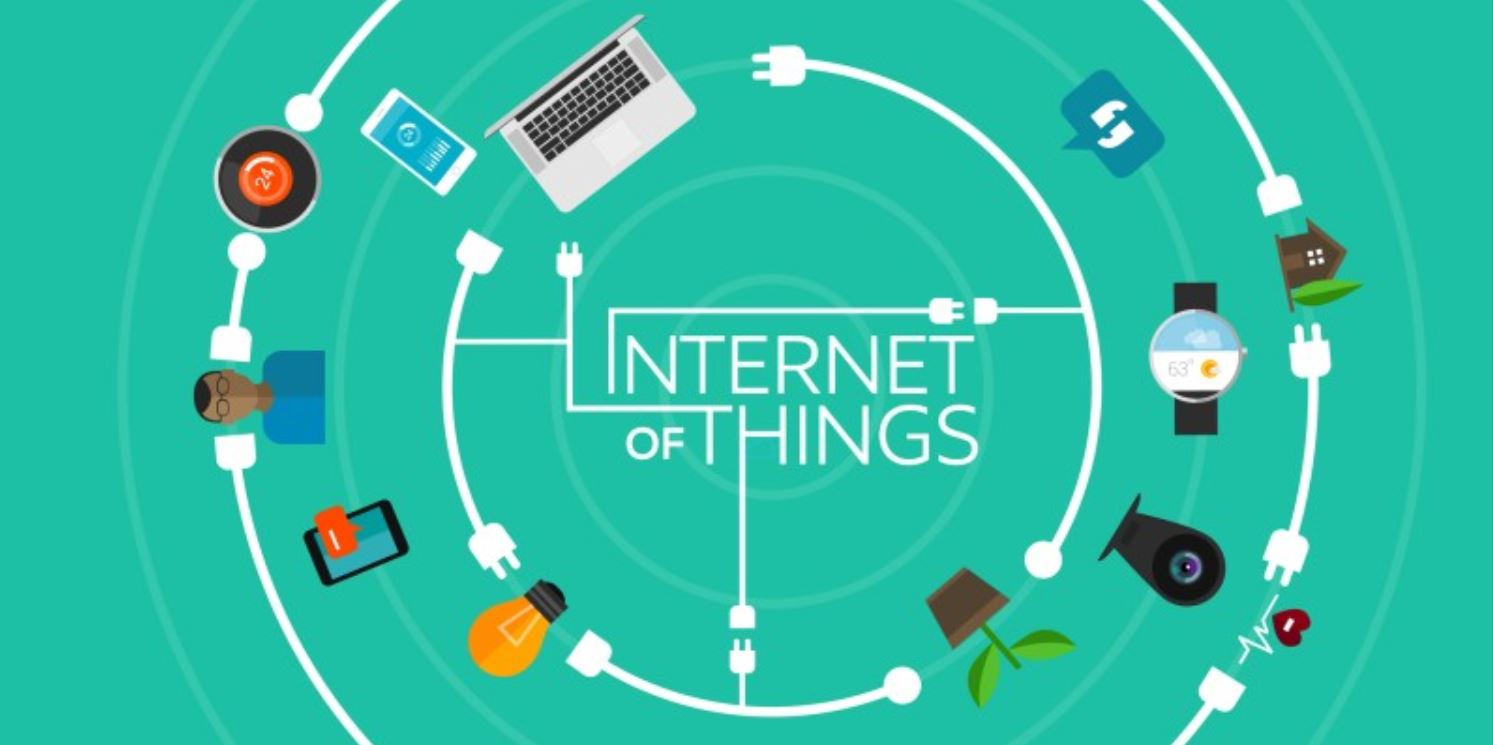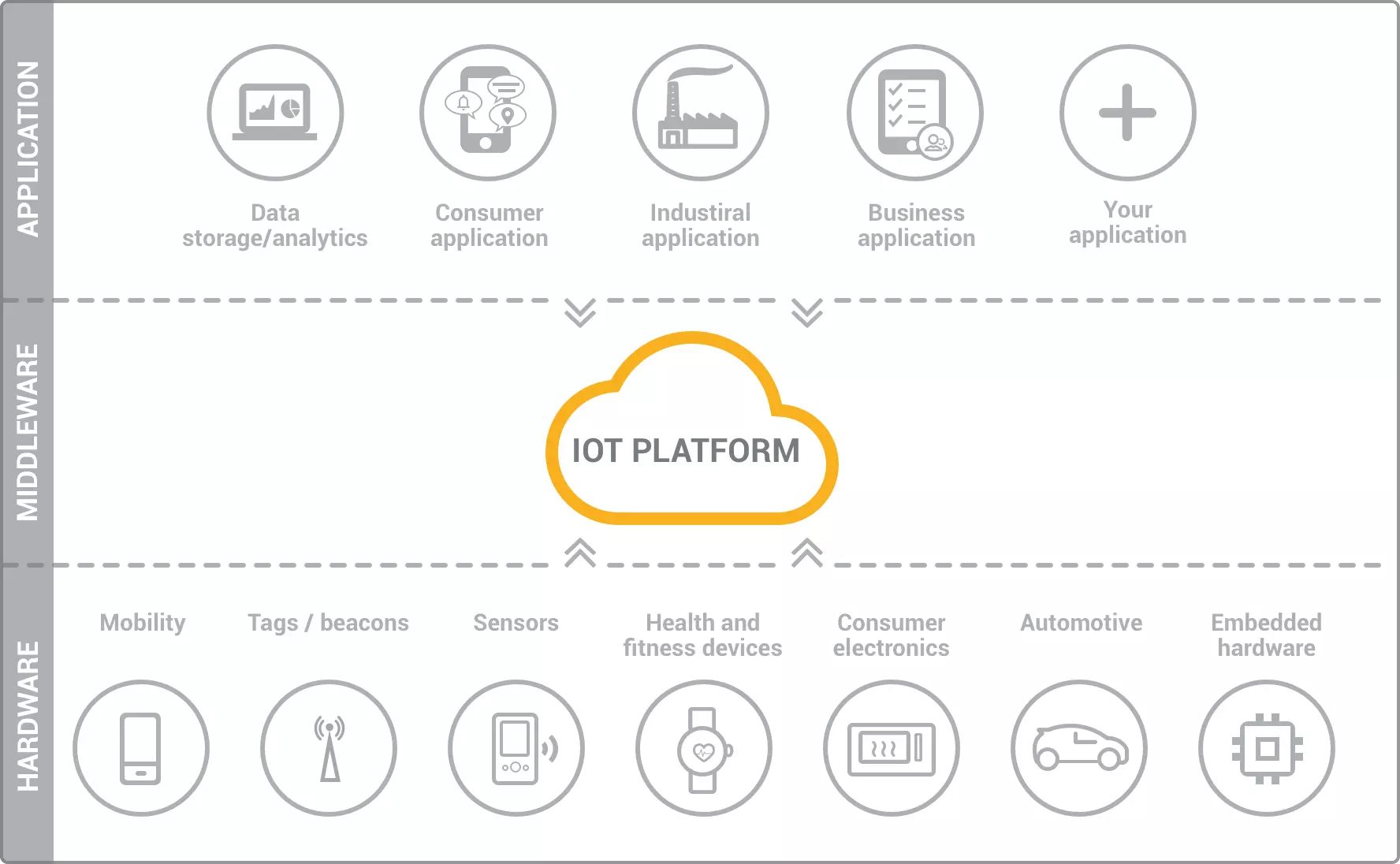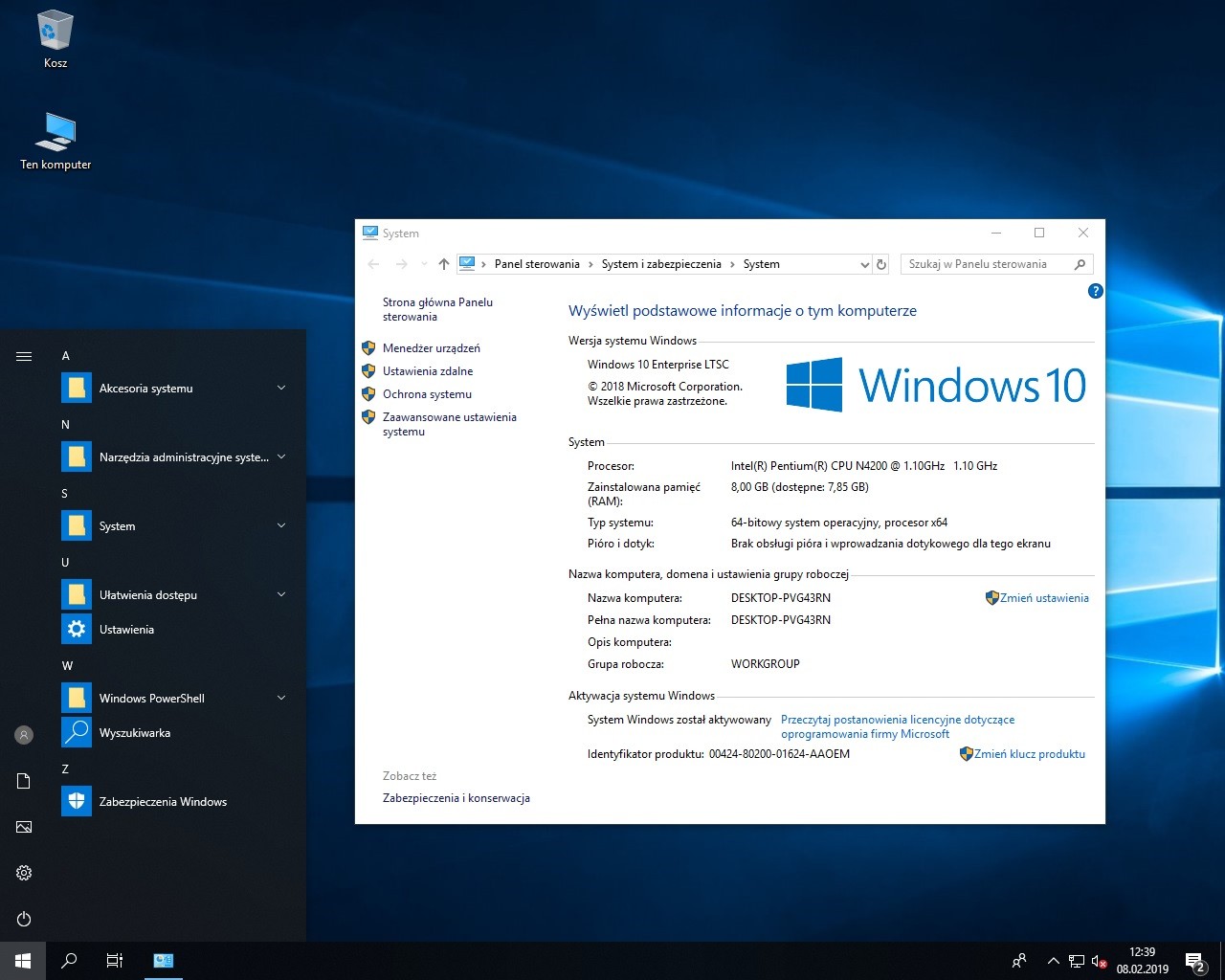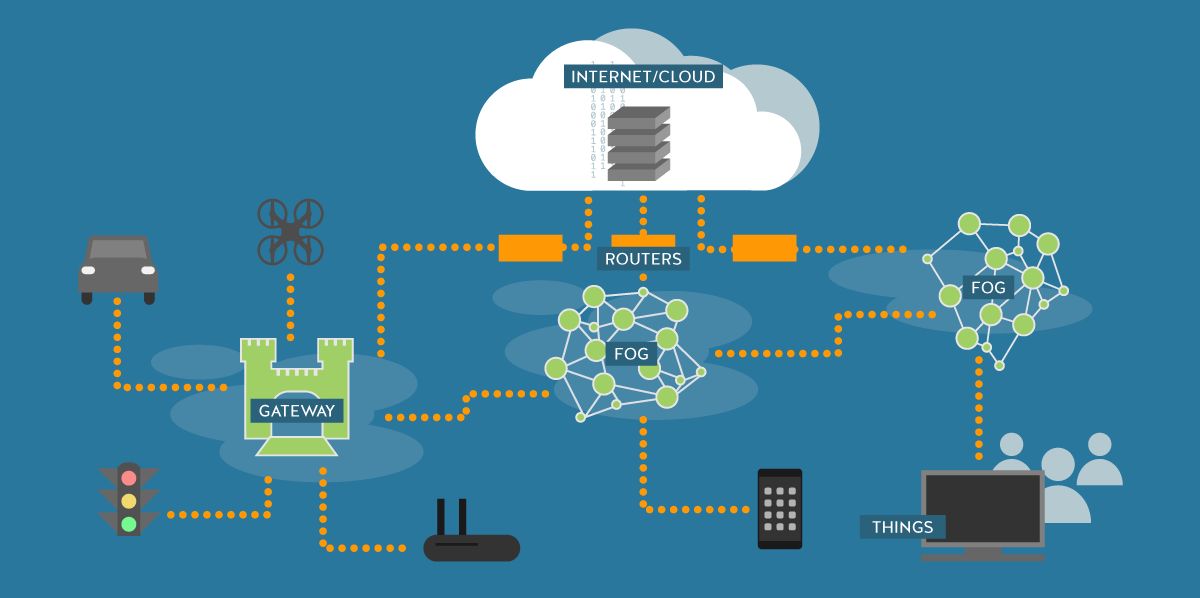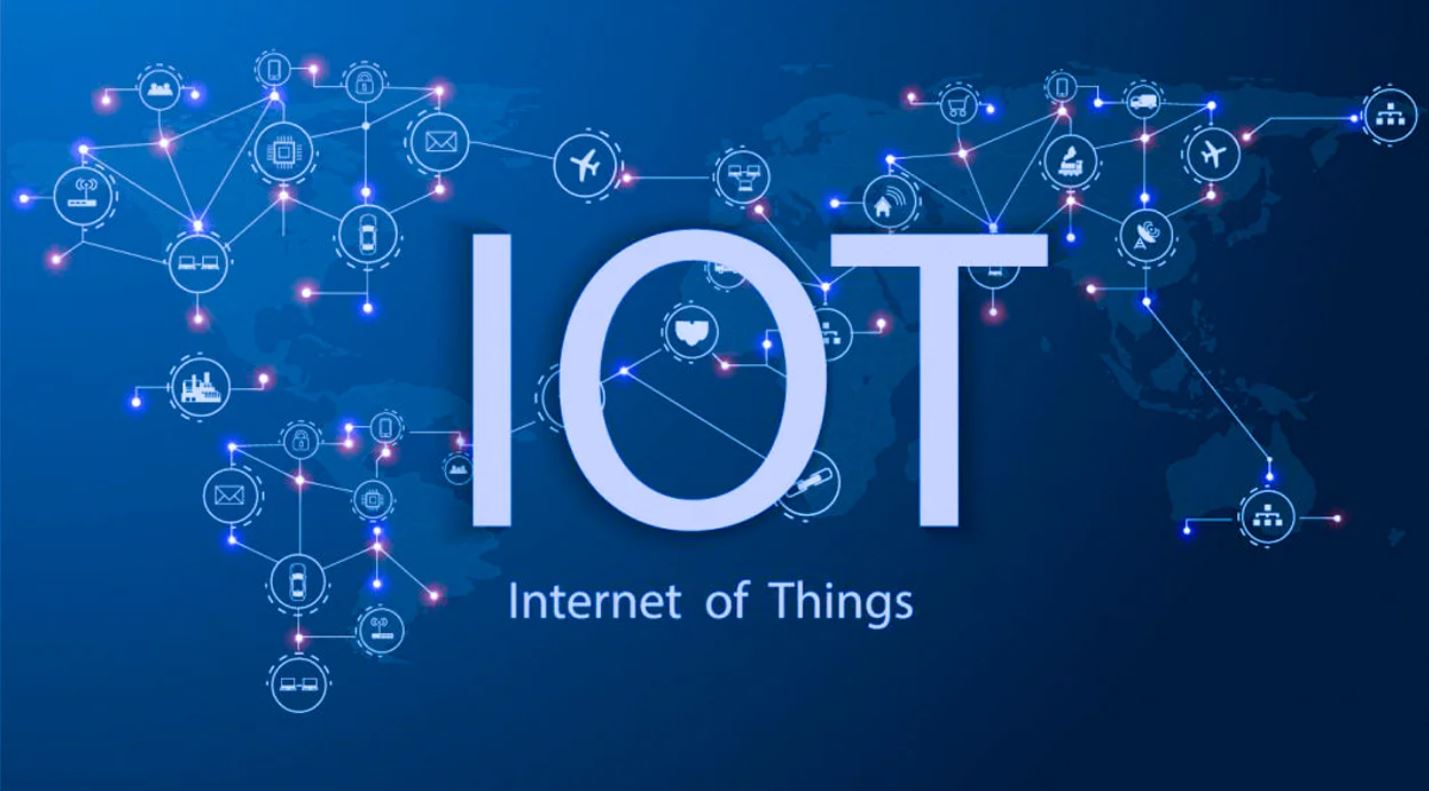Introduction
The integration of technology in the business world has revolutionized industries and changed the way companies operate. Among the most innovative and disruptive technologies is the Internet of Things (IoT). IoT refers to the network of interconnected devices and objects that can communicate and exchange data with each other. This technology has the potential to transform businesses across various industries by enabling automation, increasing efficiency, and improving decision-making processes.
By connecting physical devices such as sensors, cameras, and other industrial equipment to the internet, businesses can gather valuable data, analyze it, and extract actionable insights. The insights gained from IoT-powered devices can drive operational efficiency, enhance customer experiences, and streamline business processes. From manufacturing and logistics to healthcare and retail, IoT has the potential to create a significant impact on businesses of all sizes.
Businesses that embrace IoT can benefit from improved productivity, reduced costs, enhanced safety measures, and increased revenue opportunities. The ability to monitor and control devices remotely, collect real-time data, and automate processes can provide a competitive advantage and drive innovation.
In this article, we will explore the benefits of using IoT in business, discuss various use cases across industries, and provide insights into how to implement IoT effectively. We will also address the challenges and security concerns associated with IoT implementation and offer solutions to mitigate these risks. By the end of this article, you will have a better understanding of how IoT can revolutionize your business and how to navigate the complexities of its implementation.
What is IoT?
The Internet of Things (IoT) is a network of everyday objects embedded with sensors, software, and connectivity, enabling them to collect and exchange data. These objects can include anything from appliances and vehicles to industrial machinery and wearable devices. IoT creates a seamless and intelligent system where devices can communicate with each other and with users, generating valuable insights and improving efficiency.
The foundation of IoT lies in the combination of physical devices and the internet. Through sensors, IoT devices can gather information about their environment, such as temperature, movement, or location. This data is then transmitted to the cloud or a central software system for analysis and processing. The processed data can be used to trigger actions, make informed decisions, and improve the overall functionality of the interconnected devices.
IoT devices are equipped with connectivity options, such as Wi-Fi, Bluetooth, or cellular networks, allowing them to stay connected and receive instructions or updates remotely. This connectivity enables remote monitoring, control, and automation, where devices can be managed and operated from anywhere with an internet connection.
One of the key aspects of IoT is its ability to enable smart applications and services. By utilizing the data collected from connected devices, businesses can develop intelligent solutions that optimize operations, enhance user experiences, and drive innovation. For example, smart home systems allow homeowners to control their appliances, security systems, and energy usage remotely. In healthcare, IoT devices can monitor patients’ vital signs and send real-time updates to healthcare professionals, improving the quality of care.
The growth of IoT is driven by technological advancements, including the miniaturization of sensors, the development of low-power communication protocols, and the increased availability of affordable connectivity options. Additionally, the widespread adoption of cloud computing and big data analytics has provided the infrastructure needed to process and extract insights from the massive amounts of data generated by IoT devices.
Overall, IoT represents a paradigm shift in how we interact with everyday objects and how businesses operate. It offers opportunities for automation, optimization, and innovation across various industries, enabling businesses to become more connected, efficient, and adaptive in an increasingly digital world.
Benefits of IoT in Business
The adoption of IoT technology in businesses brings forth a multitude of benefits that can significantly impact operations, revenue, and competitive advantage. Let’s explore some of the key advantages:
- Improved Operational Efficiency: IoT devices enable real-time monitoring and automation, reducing manual intervention and optimizing processes. By collecting and analyzing data, businesses can identify areas of inefficiency and make data-driven improvements to reduce downtime, minimize waste, and enhance productivity.
- Enhanced Customer Experience: IoT allows businesses to create personalized experiences for their customers. Using data from connected devices, companies can gather valuable insights into customer preferences, behavior, and usage patterns. This information can be utilized to deliver targeted products, services, and recommendations, resulting in improved customer satisfaction and loyalty.
- Cost Reduction: IoT enables businesses to streamline operations, reduce resource consumption, and minimize operational costs. For instance, predictive maintenance using IoT sensors can help identify potential equipment failures before they happen, preventing costly breakdowns and minimizing downtime.
- Increased Safety and Security: IoT devices can enhance the safety and security of both physical assets and personnel. For example, in manufacturing facilities, connected sensors can monitor environmental conditions, detect anomalies, and trigger safety protocols. IoT-enabled surveillance systems can provide real-time monitoring of premises, improve response times, and protect against theft or unauthorized access.
- Improved Decision Making: With IoT, businesses have access to real-time and accurate data, enabling informed decision-making. The data collected from connected devices can be analyzed, providing actionable insights to optimize processes, identify trends, and make data-driven strategic decisions.
- New Revenue Opportunities: IoT opens up avenues for innovation and new revenue streams. For instance, businesses can leverage IoT data to develop value-added services, create subscription models, or offer proactive maintenance support to customers. Additionally, the data collected by IoT devices can fuel the development of new products and services that cater to evolving customer needs.
Overall, IoT offers numerous benefits that can drive growth, efficiency, and competitiveness in businesses across industries. By leveraging the power of connectivity, automation, and data analytics, companies can transform their operations, enhance customer experiences, and unlock new opportunities for innovation and revenue generation.
Use Cases of IoT in Business
The application of IoT technology spans across various industries and has the potential to revolutionize business processes and operations. Let’s delve into some notable use cases of IoT in business:
- Manufacturing: IoT enables smart factories that connect machines, sensors, and control systems. This allows for real-time monitoring of equipment, predictive maintenance, and optimization of production processes for increased efficiency and reduced downtime.
- Supply Chain and Logistics: IoT provides end-to-end visibility and traceability in the supply chain. Connected sensors, RFID tags, and GPS trackers can monitor and track assets, shipments, and inventory levels, enhancing efficiency in inventory management, route optimization, and delivery tracking.
- Retail: IoT offers personalized shopping experiences through smart shelves, beacons, and mobile apps. Retailers can track customer behavior, send targeted offers, and optimize inventory management to improve customer satisfaction and increase sales.
- Healthcare: IoT devices in healthcare enable remote patient monitoring, asset tracking, and smart healthcare systems. Wearable devices can monitor vital signs, alert healthcare providers to potential health issues, and assist in proactive patient care management.
- Agriculture: IoT is used in precision agriculture for monitoring and optimizing crop irrigation, soil quality, and pest control. Connected sensors and drones provide real-time data for better decision-making and resource management, ultimately increasing crop yield and sustainability.
- Energy Management: IoT helps in energy conservation and sustainability. Smart meters, connected appliances, and building automation systems allow users to monitor and optimize energy usage, reduce costs, and promote efficient energy management.
- Smart Cities: IoT enables the development of smart city solutions, such as intelligent transportation systems, smart parking, and waste management. These solutions leverage real-time data to optimize traffic flow, reduce congestion, and improve the overall quality of urban living.
These are just a few examples of how IoT is being implemented in various industries. The versatility and adaptability of IoT technology allow businesses to explore custom use cases and tailor IoT solutions to their specific needs. By harnessing the power of connectivity, data analytics, and automation, businesses can unlock new opportunities, achieve operational excellence, and deliver enhanced services to their customers.
How to Implement IoT in Business
Implementing IoT in a business requires careful planning and consideration to ensure a successful integration. Here are some key steps to follow when implementing IoT:
- Define Objectives: Start by clearly defining your business objectives and identifying how IoT can help achieve them. Whether it’s improving operational efficiency, enhancing customer experiences, or creating new revenue streams, having a clear vision will guide your IoT implementation strategy.
- Assess Infrastructure: Evaluate your existing infrastructure and determine if any upgrades or additions are required to support IoT implementation. This may involve upgrading connectivity options, investing in cloud storage and computing capabilities, or ensuring data security measures are in place.
- Choose the Right IoT Platform: Selecting the right IoT platform is crucial for seamless integration and management of connected devices. Look for a platform that aligns with your business requirements, offers scalability, data analytics capabilities, and provides robust security features.
- Identify Use Cases: Identify specific use cases within your business where IoT can add value. Focus on areas where IoT can improve existing processes, optimize resource utilization, or enhance customer experiences. Start with a few use cases and expand gradually to avoid overwhelming the organization.
- Select IoT Devices and Sensors: Choose the appropriate IoT devices and sensors based on your identified use cases. Consider factors such as data accuracy, durability, compatibility, and ease of integration with your existing systems and infrastructure.
- Ensure Data Security: IoT implementation introduces new security risks due to the increased data collection and connectivity. Implement robust security protocols, encryption, and authentication mechanisms to safeguard the data and protect against cyber threats.
- Develop Data Analytics Capabilities: Implement data analytics tools and techniques to process and derive actionable insights from the massive amounts of data generated by IoT devices. This will enable informed decision-making and drive further optimization and improvements.
- Test and Pilot: Before full-scale implementation, conduct thorough testing and pilot projects to identify and address any potential challenges or issues. This will help validate the feasibility of the IoT implementation and ensure a smooth transition.
- Train Employees: Provide training and support to employees who will be involved in operating and managing IoT devices and systems. This will ensure that they have the necessary skills and knowledge to leverage the technology effectively.
- Monitor and Evaluate: Continuously monitor and evaluate the performance of your IoT implementation. Gather feedback, measure key performance indicators, and make necessary adjustments to optimize the system and achieve your desired outcomes.
By following these steps, businesses can lay a solid foundation for successful IoT implementation and leverage the technology to drive innovation, improve efficiency, and gain a competitive edge in their respective industries.
Challenges and Solutions for IoT Implementation in Business
While implementing IoT in business offers numerous benefits, it also comes with its own set of challenges. Understanding and addressing these challenges is crucial to ensure a successful implementation. Here are some common challenges faced during IoT implementation and potential solutions:
- Data Security and Privacy: The widespread connectivity and data collection of IoT devices increase the vulnerability to cyber threats. Implement robust security measures such as encryption, authentication, and secure data transmission protocols. Regularly update and patch IoT devices to protect against emerging security risks.
- Compatibility and Interoperability: Integrating various IoT devices and platforms from different vendors can be complex, as compatibility and interoperability issues may arise. Conduct thorough research and choose devices and platforms that follow industry standards and provide compatibility. Utilize middleware solutions or APIs to facilitate seamless data exchange between different IoT systems.
- Scalability and Infrastructure: As the number of connected devices increases, the existing infrastructure may not be able to handle the growing data volume and bandwidth requirements. Assess and upgrade your infrastructure, including network capacity, storage, and processing capabilities, to accommodate scalability. Embrace cloud computing to expand storage and computing resources as needed.
- Data Management and Analytics: Handling and analyzing large volumes of data collected from IoT devices can be challenging. Implement an effective data management strategy that includes data storage, processing, and analytics capabilities. Utilize advanced analytics tools and techniques to derive meaningful insights from the collected data and drive informed decision-making.
- Cost and Return on Investment (ROI): The investment required for IoT implementation can be significant, including the cost of devices, infrastructure upgrades, and ongoing maintenance. Conduct a thorough cost-benefit analysis to determine the ROI potential. Focus on use cases that provide tangible business value and prioritize investments accordingly.
- Skills and Workforce: IoT implementation may require new skill sets within the workforce. Ensure that employees are trained and equipped with the necessary knowledge to manage and operate connected devices and IoT systems. Consider partnering with external experts or hiring specialized personnel if needed.
- Regulatory and Legal Compliance: IoT implementation may raise legal and compliance challenges, especially regarding data privacy, consumer rights, and industry-specific regulations. Stay up-to-date with relevant laws and regulations and ensure compliance. Establish transparent data privacy policies and procedures to gain customer trust and maintain regulatory compliance.
- Continuous Monitoring and Maintenance: IoT devices and systems require ongoing monitoring and maintenance to ensure optimal performance. Implement monitoring tools and establish protocols for proactively identifying and addressing issues. Regularly update firmware, software, and security patches to mitigate vulnerabilities and ensure system reliability.
Addressing these challenges with appropriate solutions and strategies will help businesses navigate the complex landscape of IoT implementation and maximize the potential benefits of this transformative technology.
Security Concerns of IoT in Business
Implementing an Internet of Things (IoT) infrastructure in business also brings forth security concerns that need to be carefully addressed. The interconnected nature of IoT devices increases the attack surface and introduces new vulnerabilities. Here are some security concerns businesses should be aware of when implementing IoT:
- Data Privacy: IoT devices collect a vast amount of data, including sensitive information about customers, employees, or business operations. Proper measures must be in place to protect this data from unauthorized access or breaches. Implement data encryption, user authentication, and secure data transmission protocols to safeguard sensitive information.
- Device Vulnerabilities: IoT devices are susceptible to security vulnerabilities, often due to inadequate security measures during manufacturing or lack of firmware updates. Regularly update and patch IoT devices to address known vulnerabilities. Employ physical security measures, such as tamper-proofing or secure boot processes, to prevent unauthorized access to devices.
- Network Security: IoT devices rely on network connectivity to transmit data, making the network a potential target of attacks. Implement strong network security measures, including firewalls, intrusion detection systems, and virtual private networks (VPNs) to secure data transmission and protect against unauthorized access.
- Weak Authentication and Access Control: Inadequate authentication mechanisms and weak access control policies can lead to unauthorized access to IoT devices and systems. Implement strong passwords, two-factor authentication, and role-based access control to ensure only authorized individuals can access and manage IoT devices and systems.
- Firmware and Software Security: Outdated firmware and software versions can have known security vulnerabilities. Regularly update and patch the firmware and software running on IoT devices to mitigate security risks. Implement secure coding practices during software development to minimize the potential for vulnerabilities.
- Supply Chain Risks: The complex supply chain involved in IoT device manufacturing introduces potential risks. Ensure that the supply chain partners adhere to strict security standards and conduct thorough vetting of suppliers. Implement measures to detect and mitigate risks related to counterfeit components or malicious tampering.
- Insufficient Monitoring and Incident Response: Prompt detection and response to security incidents are critical in mitigating potential damage. Implement monitoring systems and intrusion detection mechanisms to identify anomalous behavior and unauthorized access attempts. Develop an incident response plan to address security breaches and minimize the impact on business operations.
- Third-Party Security: Many IoT implementations involve the use of third-party services or cloud platforms. Ensure that these providers have robust security measures in place and adhere to industry-recognized security standards. Conduct regular audits and assessments to verify their security practices and ensure compliance.
Addressing these security concerns requires a holistic approach that includes proactive security measures, ongoing monitoring, and continuous improvement. By prioritizing security from the onset of IoT implementation, businesses can mitigate risks and create a secure environment for their IoT infrastructure.
Conclusion
The Internet of Things (IoT) has emerged as a game-changing technology that is transforming businesses across various industries. By connecting devices, collecting and analyzing data, and enabling automation, IoT offers numerous opportunities for increased efficiency, improved decision-making, and enhanced customer experiences. However, implementing IoT in business does come with its own set of challenges.
Despite these challenges, the benefits of IoT implementation are significant. Businesses can achieve improved operational efficiency, enhanced customer experiences, reduced costs, increased safety measures, and new revenue opportunities. From manufacturing and supply chain management to healthcare and smart cities, IoT has the potential to revolutionize industries and drive innovation.
To successfully implement IoT, businesses must define clear objectives, assess their infrastructure, choose the right IoT platform, identify relevant use cases, select suitable devices and sensors, ensure data security, develop data analytics capabilities, test and pilot projects, train employees, and continuously monitor and evaluate the implementation.
Addressing the challenges associated with IoT implementation, such as data security and privacy, compatibility and interoperability, scalability and infrastructure, data management and analytics, cost and ROI concerns, skills and workforce requirements, regulatory compliance, and continuous monitoring and maintenance, is crucial for a successful IoT deployment in business.
By taking a comprehensive and strategic approach to IoT implementation, businesses can leverage this powerful technology to gain a competitive advantage, drive innovation, and deliver superior products and services to their customers.







